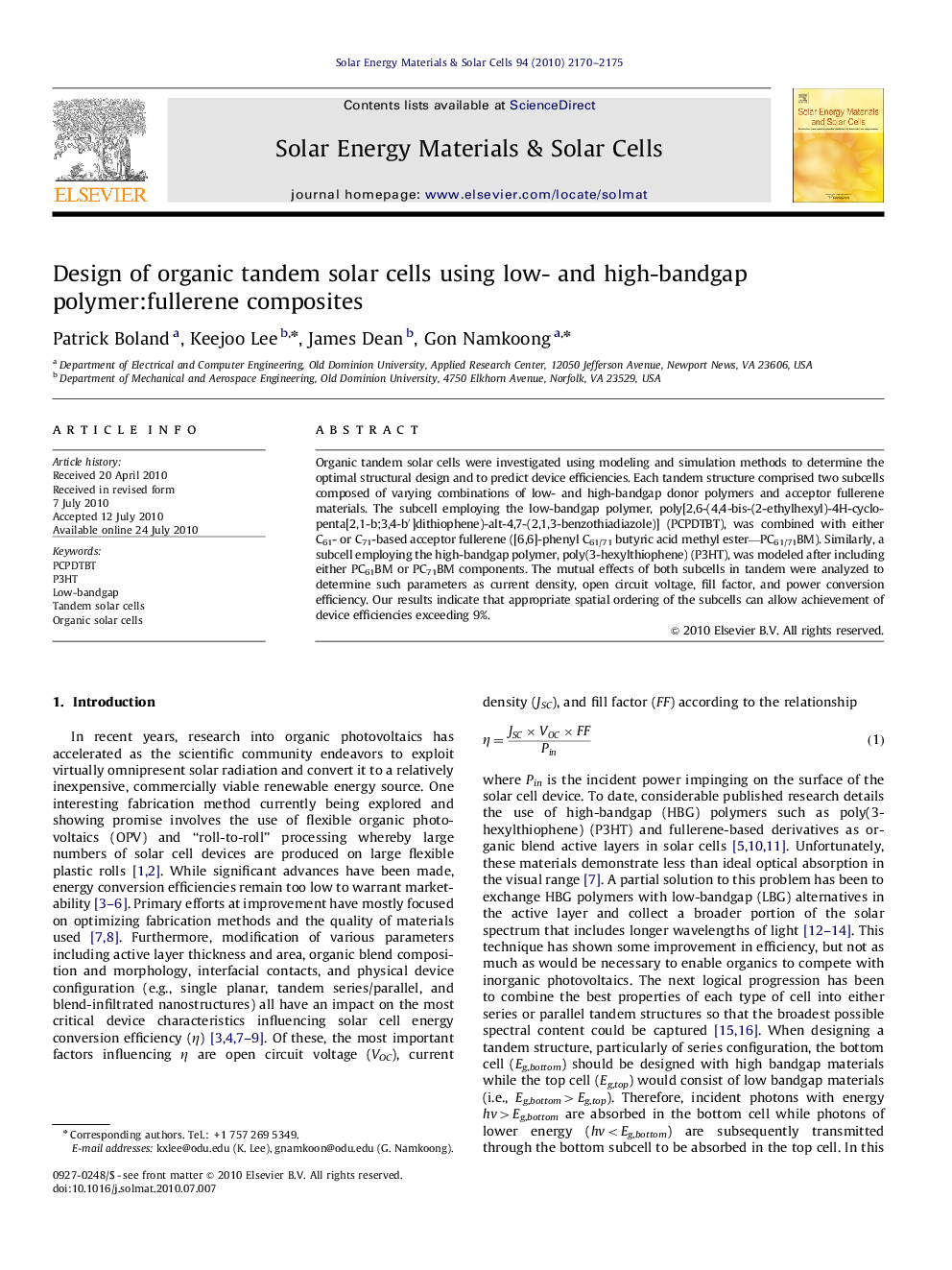| Article ID | Journal | Published Year | Pages | File Type |
|---|---|---|---|---|
| 79822 | Solar Energy Materials and Solar Cells | 2010 | 6 Pages |
Organic tandem solar cells were investigated using modeling and simulation methods to determine the optimal structural design and to predict device efficiencies. Each tandem structure comprised two subcells composed of varying combinations of low- and high-bandgap donor polymers and acceptor fullerene materials. The subcell employing the low-bandgap polymer, poly[2,6-(4,4-bis-(2-ethylhexyl)-4H-cyclopenta[2,1-b;3,4-b′]dithiophene)-alt-4,7-(2,1,3-benzothiadiazole)] (PCPDTBT), was combined with either C61- or C71-based acceptor fullerene ([6,6]-phenyl C61/71 butyric acid methyl ester—PC61/71BM). Similarly, a subcell employing the high-bandgap polymer, poly(3-hexylthiophene) (P3HT), was modeled after including either PC61BM or PC71BM components. The mutual effects of both subcells in tandem were analyzed to determine such parameters as current density, open circuit voltage, fill factor, and power conversion efficiency. Our results indicate that appropriate spatial ordering of the subcells can allow achievement of device efficiencies exceeding 9%.
